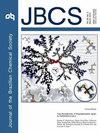Dispersive Liquid Phase Microextraction (DLPME) as a Strategy for CdII Separation and Determination in High-Salinity Produced Waters by Graphite Furnace Atomic Absorption Spectrometry
IF 1.3
4区 化学
Q3 CHEMISTRY, MULTIDISCIPLINARY
引用次数: 0
Abstract
In this study, we propose a microextraction method for the determination of CdII in produced waters. The process is based on the conversion of CdII ions into a hydrophobic diethyldithiocarbamate (DDTC) complex with its subsequent dispersive liquid phase microextraction (DLPME) from the aqueous medium with chloroform. The organic phase was then diluted with ethanol and Cd absorbance was measured by graphite furnace atomic absorption spectrometry (GF AAS). The experimental conditions related to the DLPME process were investigated, and the best microextraction conditions were achieved at pH = 6.0 (acetate buffer), 7.5 × 10-6 mol L-1 of DDTC, and when using 200 µL of chloroform as the extracting solvent. No dispersing solvent was needed, which allowed the recovery of approximately 140 µL of chloroform extract. Pyrolysis and atomization temperatures of the GF AAS program were determined through the construction of the respective curves. The estimated limits of detection (LOD) and quantification (LOQ) were 5 and 17 ng L-1, respectively, whereas the enrichment factor for the method was 17. Six samples of seawater and five samples of produced waters with salinities between 30 and 270‰ were analyzed as well as two certified reference materials of saline waters.分散液相微萃取-石墨炉原子吸收光谱法分离测定高盐度采出水中CdII
本研究提出了一种微萃取法测定采出水中CdII的方法。该工艺是基于CdII离子转化成疏水二乙基二硫代氨基甲酸酯(DDTC)配合物,随后用氯仿从水介质中进行分散液相微萃取(DLPME)。然后用乙醇稀释有机相,用石墨炉原子吸收光谱法(GF AAS)测定Cd吸光度。考察了DLPME工艺的相关实验条件,最佳微萃取条件为pH = 6.0(醋酸缓冲液),DDTC浓度为7.5 × 10-6 mol L-1,提取溶剂为200µL氯仿。不需要分散溶剂,可以回收约140µL的氯仿提取物。通过构建相应的曲线,确定了GF AAS程序的热解和雾化温度。该方法的估计检出限(LOD)和定量限(LOQ)分别为5和17 ng L-1,富集系数为17。分析了盐度在30 ~ 270‰之间的6个海水样品和5个采出水样品,以及2个咸水标准物质。
本文章由计算机程序翻译,如有差异,请以英文原文为准。
求助全文
约1分钟内获得全文
求助全文
来源期刊
CiteScore
2.90
自引率
7.10%
发文量
99
审稿时长
3.4 months
期刊介绍:
The Journal of the Brazilian Chemical Society embraces all aspects of chemistry except education, philosophy and history of chemistry. It is a medium for reporting selected original and significant contributions to new chemical knowledge.

 求助内容:
求助内容: 应助结果提醒方式:
应助结果提醒方式:


